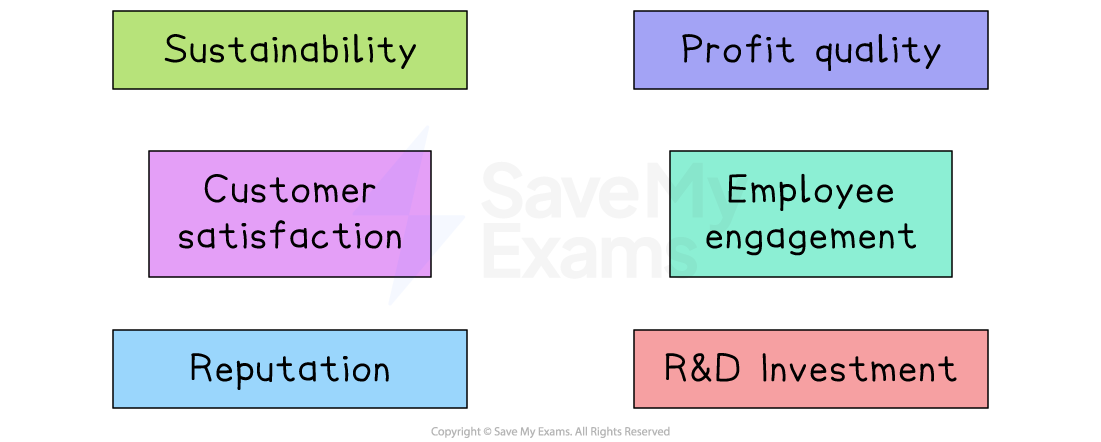Assessing Short- and Long-Term Performance (AQA A Level Business): Revision Note
Exam code: 7132
Short-term performance measures
Businesses accused of short-termism often focus on a few key figures each quarter or year
These metrics keep investors happy in the short-term
Over-emphasis on them can divert resources away from long-term innovation, sustainability or growing market share
Examples of short-term performance measures

Earnings per share
This shows how much profit each share earns in a given period of time, usually a year
Investors use this measure as a quick gauge of profitability
E.g. Large public limited companies, such as Unilever issue detailed earnings per share information and are judged heavily on hitting these targets, sometimes at the expense of longer-term investment
Quarterly revenue growth
This is the percentage increase (or decrease) in sales compared with the same quarter last year
Fast-growing revenue keep investors happy and help justify high share prices, even if profit margins are low
E.g. Amazon constantly highlights its year-on-year revenue increases each quarter, pushing each of its divisions to pursue revenue growth above all else
Dividend payout
This is the share of profits returned to shareholders as dividends
A steady or rising dividend keeps investors onside and keeps the share price high
E.g. British American Tobacco places huge emphasis on maintaining and growing its dividend payout every year, at the expense of spending on R&D
Long-term performance measures
These measures suggest that managers and investors are more focused on the long-term success of a business
Examples of long-term performance measures

Sustainability
This is a measure of a company’s environmental and social performance
It may include its emissions, renewable energy use or approach to responsible sourcing of raw materials and components
A business that performs well on this metric shows it can thrive without harming the planet.
E.g. Unilever’s Sustainable Living Plan aims to halve greenhouse gas emissions by 2030 and source 100% of its raw materials sustainably by 2023, with progress published annually
Customer satisfaction
This is a measure of how happy buyers are with a firm’s products or services
High scores can be a good indicator of repeat business and strong word-of-mouth promotion
Reputation
This is a measure of how highly a business is regarded by peers, investors and the public
A strong reputation can give a business the power to charge premium prices and gain the long-term trust of stakeholders
Employee engagement
This is a measure of how committed and motivated staff are
Opinions are collected by surveys or employer-ranking lists
Engaged workforces increase productivity and innovation, and are more likely to remain with a business in the long-term
E.g. Hilton topped the '100 Best Companies to Work For' list in 2024, an indicator that its employees feel valued and are likely to stay and perform at their best
Profit quality
This is a measure of how much reported profit converts into actual cash from core operations, rather than one-off gains
High-quality profits fund long-term investments that are likely to lead to further growth
E.g. In 2025, 97% of Next Plc's profit came from its core retail trade, online and in-store, rather than one-off gains
R&D investment
The amount or percentage of revenue spent on research and development
This signals how much a business is preparing new products, services or processes for the future
E.g. Alphabet (Google’s parent company) invested $49.3 billion in R&D during 2024, which is around 14 % of its revenue. It intends to spend it on advanced AI, cloud computing and new hardware projects

Unlock more, it's free!
Did this page help you?